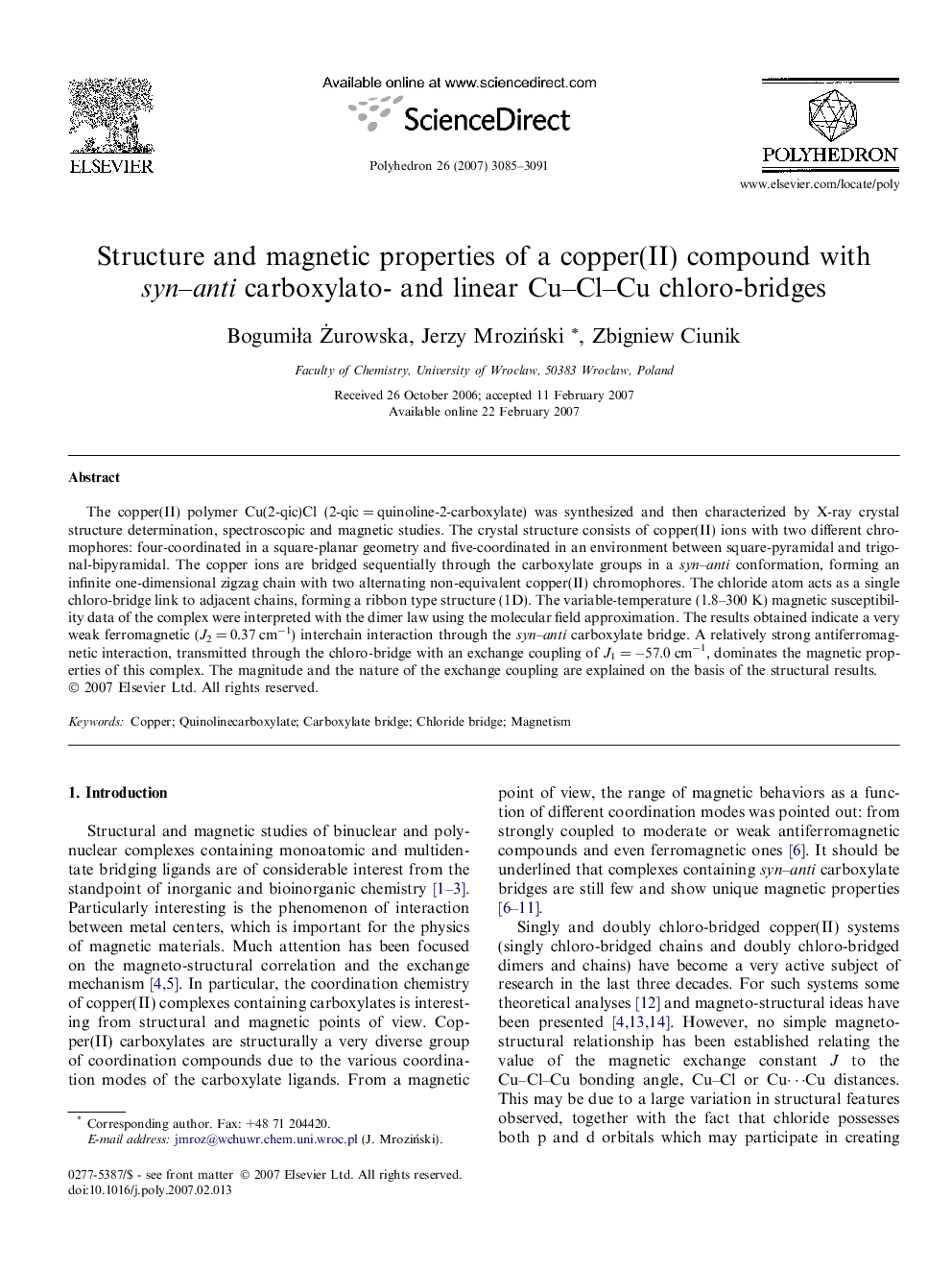| کد مقاله | کد نشریه | سال انتشار | مقاله انگلیسی | نسخه تمام متن |
|---|---|---|---|---|
| 1338474 | 979668 | 2007 | 7 صفحه PDF | دانلود رایگان |

The copper(II) polymer Cu(2-qic)Cl (2-qic = quinoline-2-carboxylate) was synthesized and then characterized by X-ray crystal structure determination, spectroscopic and magnetic studies. The crystal structure consists of copper(II) ions with two different chromophores: four-coordinated in a square-planar geometry and five-coordinated in an environment between square-pyramidal and trigonal-bipyramidal. The copper ions are bridged sequentially through the carboxylate groups in a syn–anti conformation, forming an infinite one-dimensional zigzag chain with two alternating non-equivalent copper(II) chromophores. The chloride atom acts as a single chloro-bridge link to adjacent chains, forming a ribbon type structure (1D). The variable-temperature (1.8–300 K) magnetic susceptibility data of the complex were interpreted with the dimer law using the molecular field approximation. The results obtained indicate a very weak ferromagnetic (J2 = 0.37 cm−1) interchain interaction through the syn–anti carboxylate bridge. A relatively strong antiferromagnetic interaction, transmitted through the chloro-bridge with an exchange coupling of J1 = −57.0 cm−1, dominates the magnetic properties of this complex. The magnitude and the nature of the exchange coupling are explained on the basis of the structural results.
The copper(II) polymer Cu(2-qic)Cl (2-qic = quinoline-2-carboxylate) was synthesized and characterized by X-ray crystal structure determination, spectroscopic and magnetic studies. The copper ions are sequentially bridged by the carboxylate groups in a syn–anti conformation to form an infinite a one-dimensional zigzag chain with two alternating non-equivalent copper(II) chromophores. The chloride atom acts as single chloro-bridge link to an adjacent chain forming a ribbon type structure. The magnetic behaviour is interpreted on the basis of the structural data.Figure optionsDownload as PowerPoint slide
Journal: Polyhedron - Volume 26, Issue 13, 6 August 2007, Pages 3085–3091